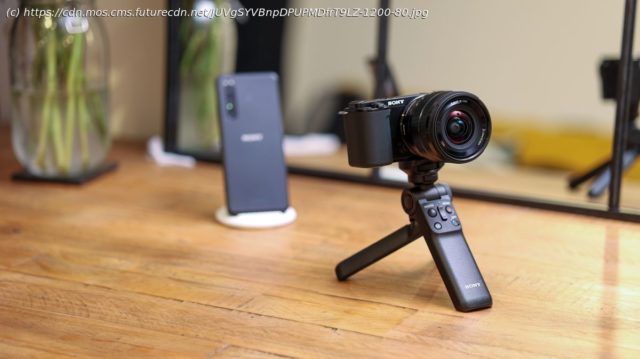The Sony ZV-E10 jumbles elements from existing Sony cameras to create an affordable vlogging and streaming workhorse.
Remember when Sony cameras didn’t even offer vloggers so much as an articulating screen? That wasn’t long ago, but the Sony ZV-E10 is the latest in a growing line of video-centric Sony cameras that fixes this limitation, while neatly filling a gap between its entry-level (Sony ZV-1) and mid-range (Sony A6100) offerings. Like an A6100 spin-off with a video-tastic bod, the ZV-E10 is effectively two parts old internals and one-part new body, with a dash of souped-up software. What’s even better is that this new entry wants to scratch your video itch without going over $1,000/ £1,000/ AUS $1,500 mark. So what’s the ZV-E10 packing in a nutshell? There’s a 24MP APS-C sensor at its heart, and it’s powered by Sony’s NP-FW50 batteries. The camera captures 4K video at up to 30fps (sadly not 60fps), and as far as still go, it does everything the A6100 does (11fps burst shooting, for example) while offering software smarts like the ‘bokeh switch’ and ‘product showcase’ setting that we saw on the Sony ZV-1. Sony’s made the ZV-E10 lightweight, with the compact body taking less space in a kit bag and hand than an A6100, for example. It’s smaller because it loses out on a viewfinder and flash, though Sony does add a larger microphone grille at the top of the camera, which in turn, boosts its sound recording. The ZV-E10 also sports a fully articulating screen, as well as both a mic-in and a headphone out; ports that are missing on its A6000-series counterparts. Now, while this all screams video, the 24MP sensor isn’t without its limitations; specifically, that well-documented jelly effect when panning with it. Just like the A6100, whose under-the-hood specs it matches in most respects, the camera’s rolling shutter can render it unusable for run-and-gun camera operators who love aggressive pans. With handy USB-C tethering for direct streaming to PC, and the additional audio port and video-oriented design, the ZV-E10 is still a compelling choice for Sony users looking for an affordable studio B cam or interview camera, or something to keep hooked up to their computer. The ZV-E10 is also a clear step up over the ZV-1, and costs less than half the price of the full-frame Sony A7C, so makes sense in the context of Sony’s other cameras. If you aren’t sold on Sony, though, you could well be better off spending a bit more and opting for a Panasonic GH5 Mark II if you want 4K/60p capture, or even a Blackmagic Pocket Cinema Camera if you consider yourself more of a filmmaker and don’t need stills capture. Alternatively, the Canon EOS M6 Mark II costs about the same as the ZV-E10, and with the right adapter could be the better option if you’ve got a bunch of Canon glass. Alternatives aside, if you want a compact mirrorless Sony camera with a flip-out screen for video, and can handle some wobbles in your panning clips, nothing else does what the ZV-E10 can for the price. It’s also got better than average on-body microphone performance, and a headphone jack, making it a perfect alternative to the A6100, even if it isn’t quite a perfect camera. The Sony ZV-E10 will be available to buy from the end of August for $700 / £680 / AU$1,249 or $800 / £770 / AU$1,449 with the 16-50mm kit lens. This means the ZV-E10 sits in between the Sony ZV-1 and the Sony A6100, although the latter’s recently discounted price brings it down the ZV-E10’s level. While the A6100 still makes sense for stills photographers, the ZV-E10 has better video-related features, ergonomics and ports. With a price tag that’s not much higher than the Sony ZV-1 compact camera, Sony is effectively giving you a choice between a pocketable all-in-one vlogging camera (the Sony ZV-1) and the flexibility and larger sensor of an interchangeable lens camera (the ZV-E10). You’ll know the ZV-E10 is a Sony camera as soon as you prod the touchscreen to interact with the menus and nothing happens. Yep, while Sony introduced a fancy new touch menu for the Sony A7S III and FX3, the newer ZV-E10 forces you to navigate the UI with the four-way wheel to the right of the display, meaning we’re still waiting for the feature to land on a lower-end camera. You’ll also recognize plenty of Sony-isms in the camera’s design language well before you get to the menu. The top of the camera features a Multi-Interface hot shoe mount, which supports digital audio devices, alongside a grille that covers a three-capsule microphone.






